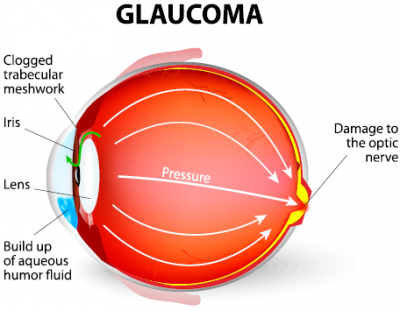
When physicians affiliated with the San Francisco-based Glaucoma Research Foundation look at this disease, they treat it as a worldwide problem. More than cataracts, glaucoma, researchers say, is the leading cause of blindness worldwide. The struggle for early detection, treatment and eventually, a cure, goes on. Recently, leading researchers with the GRF met to discuss progress and obstacles to combat this eye disease, one caused when axons in the optic nerve are damaged to the point where they can no longer carry the necessary information to the brain.
Physicians working on glaucoma research have formed a Catalyst for a Cure (CFC) initiative designed to share information and insights on glaucoma prevention and treatment. At a recent roundtable, they shared insights, hopes and even frustrations on the glaucoma front.
“Glaucoma is a really tough disease,” admitted Dr. Jeffrey L. Goldberg. “[The] big problem worldwide is [that] we don’t have a good way to diagnose the disease. We need better biomarkers, in other words; we have no way for patients who have lost vision in glaucoma, to restore that vision, to give them back vision that we’ve lost. Right now, all of our treatments, the best that they can do, is try to slow the decline, or prevent the further loss of vision.”
Others expressed optimism over the formation of the CFC and held out some hope in the latest research.
 “Glaucoma is very difficult to detect and treat for a couple of reasons,” added Dr. Andrew Huberman. “One is that the cells that are affected, retinal ganglion cells, are optically clear and this is very important….[Because] they’re clear, it’s impossible to focus an image onto the ganglion cells and to essentially look at the ganglion cells and see how many they are, and evaluate whether they’re healthy or not. So what we’re trying to do is develop biomarkers that will enable us to see those cells in really sharp relief and be able to interrogate those cells and ask whether or not they’re in a healthy, sick, or perhaps getting sick state.”
“Glaucoma is very difficult to detect and treat for a couple of reasons,” added Dr. Andrew Huberman. “One is that the cells that are affected, retinal ganglion cells, are optically clear and this is very important….[Because] they’re clear, it’s impossible to focus an image onto the ganglion cells and to essentially look at the ganglion cells and see how many they are, and evaluate whether they’re healthy or not. So what we’re trying to do is develop biomarkers that will enable us to see those cells in really sharp relief and be able to interrogate those cells and ask whether or not they’re in a healthy, sick, or perhaps getting sick state.”
“One important finding from Andrew Huberman’s lab at the University of California San Diego, is that connections in a specific layer of the retina change first in early glaucoma,” said Dr. Vivek Srinivasan. “We believe that this particular layer of the retina may provide us with a biomarker for early changes in glaucoma.”
“One of the techniques that was the most exciting development in the last year…is the development of the split detection technique,” said Dr. Alfredo Dubra. “[One] of them is a little mask over here that…rather than…collecting the light through a central small pinhole, is…letting all the light around that pinhole, rather than be wasted, is collected here in the back by two light detectors – and by combining those two, we’ve been able to create images with unprecedented contrast of things that are transparent inside the retina. It is what is allowing us to study the vasculature, and we’re hoping that we can continue to improve on this technique to hopefully one day reveal the retinal ganglion cells noninvasively.”
As always, there is the quest for new technology. Dr. Stuart J. McKinnon, writing in Gleams, identified such new strategies as nerve grafts, nanotechnology, cellular implants, genetic manipulations, promoters of nerve growth and steam cell approaches. Although McKinnon, too, admits that there is much research to be done, he maintained that researchers “have made great progress in understanding the process of optic nerve growth degeneration and regeneration in glaucoma.”
Early testing remains essential. And for any research project, it’s always helpful when a celebrity has a story to tell. Roger McGuinn, the legendary co-founded of The Byrds, was diagnosed with glaucoma 10 years ago. But that was early enough. Daily medication has allowed McGuire to keep his vision and continue touring and playing music. “When I was first diagnosed with glaucoma, I was depressed,” McGuinn told GRF. “I didn’t know much about glaucoma, or whether the pressure could be controlled. I had trouble even accepting that something this serious could happen to my eyes. “People have to realize that they really need to be tested for glaucoma. Waiting may result in vision loss and then it’s too late,” McGuinn continued. “My motivation is getting people to realize they should be tested while we hope for a cure in the near future.”
—Information by The Glaucoma Research Foundation


















